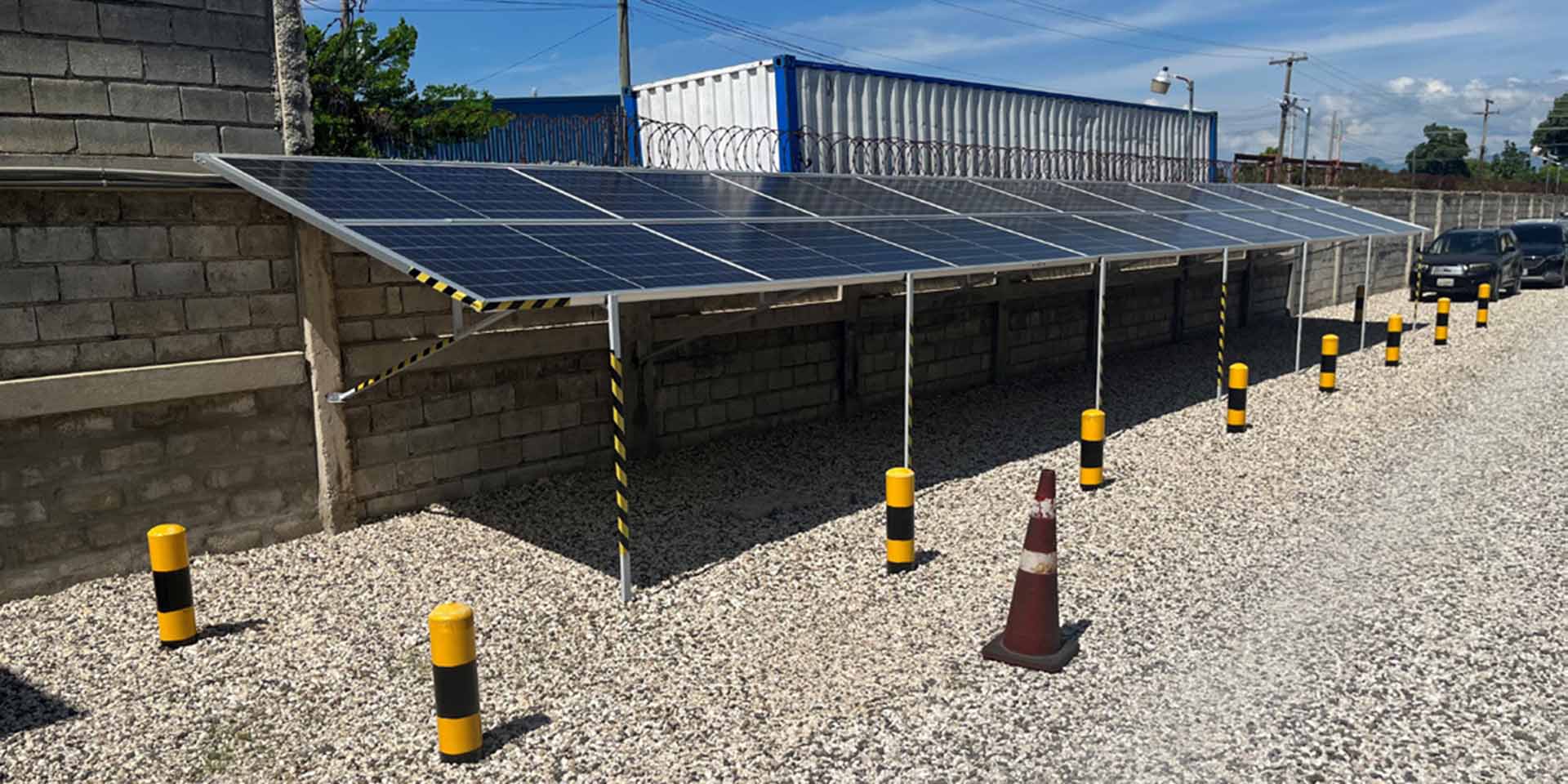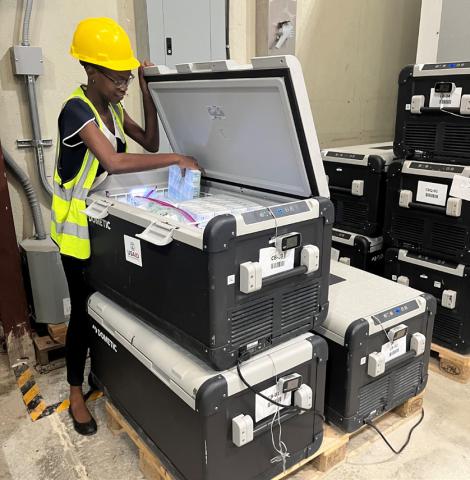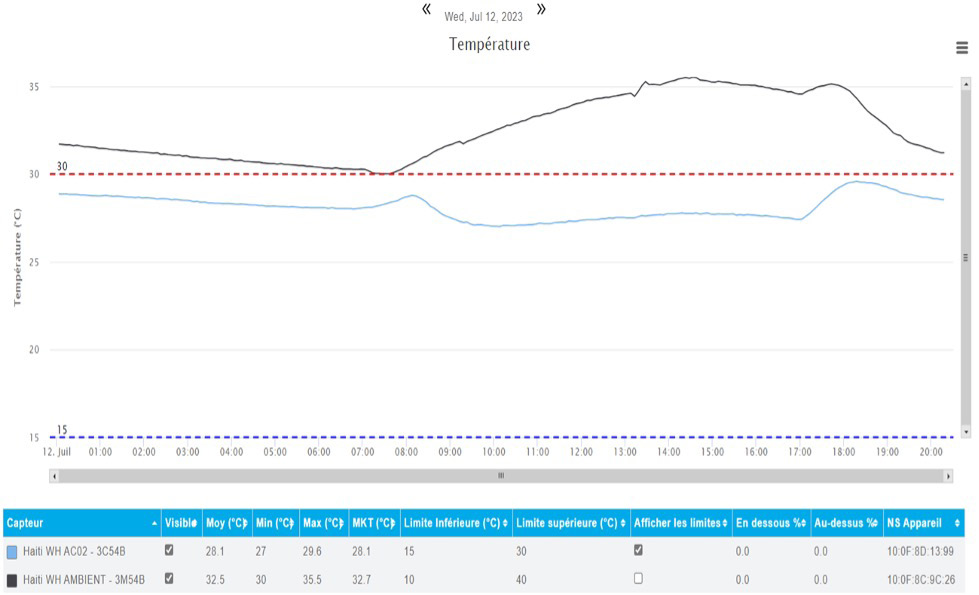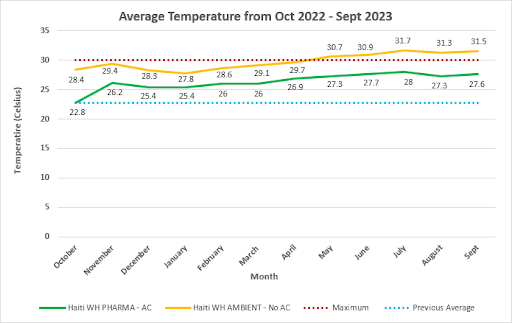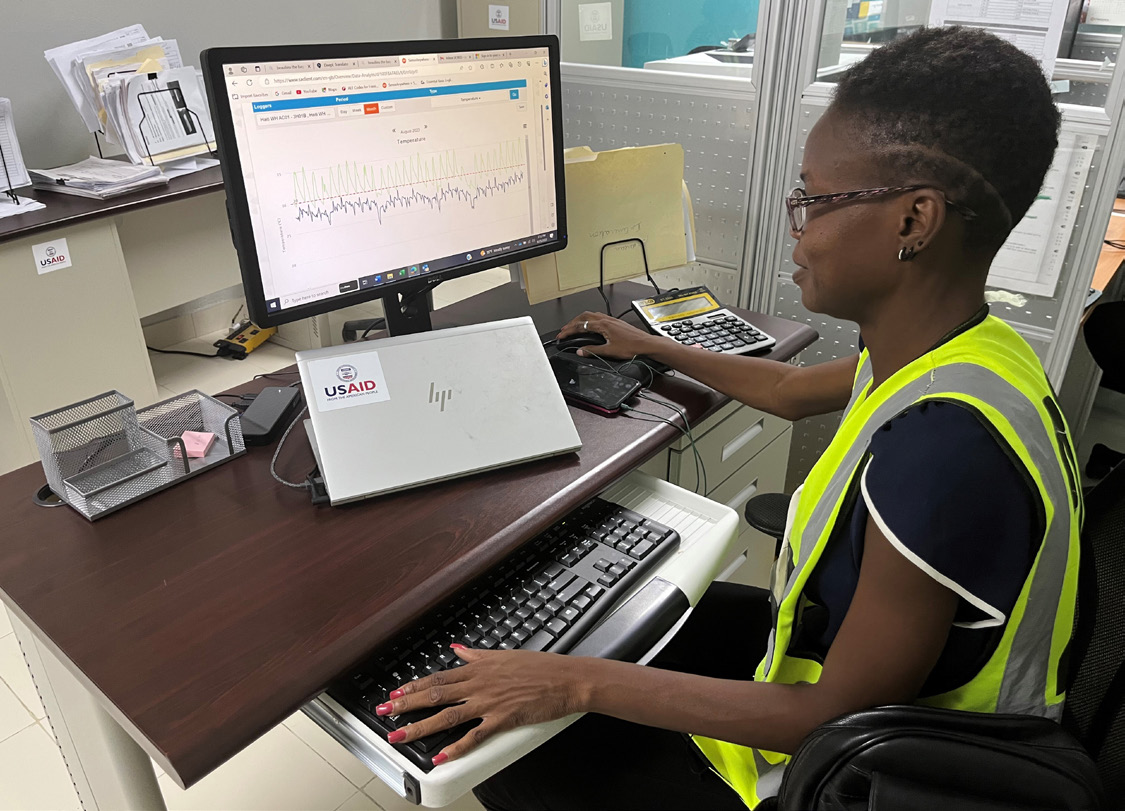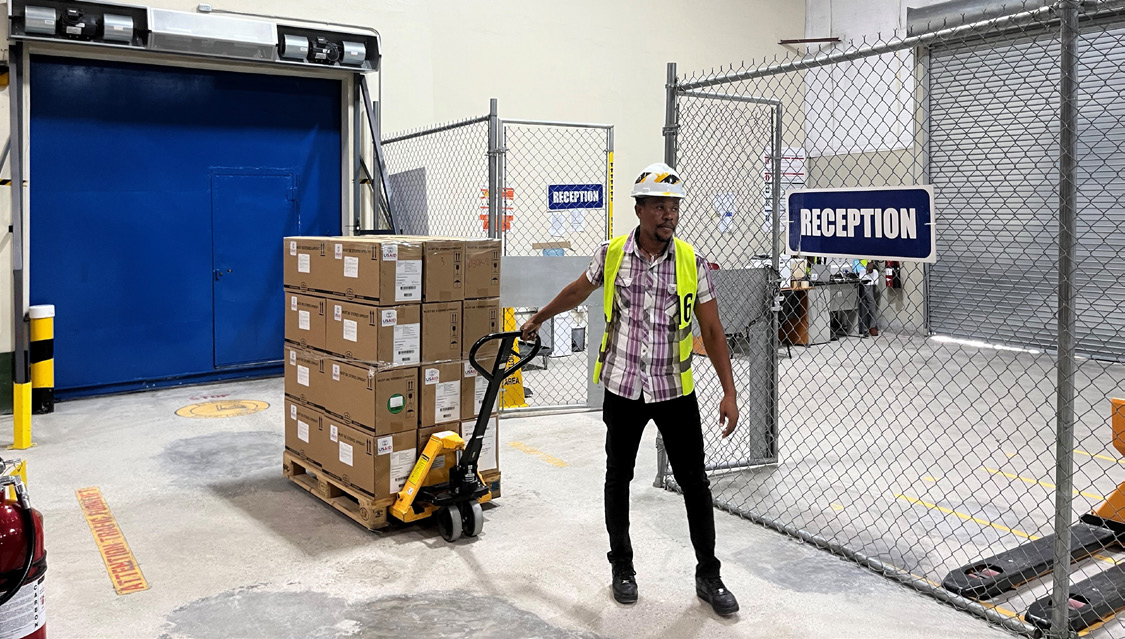Medicines and other pharmaceutical products can degrade over time if exposed to high temperatures. In USAID-supported countries, excessive heat can threaten the quality of medicines stored in warehouses.
In Haiti, GHSC-PSM manages a warehouse where the project stores antiretroviral and essential medicines, contraceptive pills, injectables, and implants, HIV rapid test kits, and other health commodities (including for COVID-19 and cholera emergency response) that must be stored in a temperature-controlled environment at manufacturer specified
temperatures.
Until recently, GHSC-PSM maintained all pharmaceutical-grade commodities at a constant temperature of 22 degrees Celsius, using air conditioners powered by generators. These protocols required the presence of at least one warehouse staff member around the clock to prevent interruptions in cooling when generators failed. Project staff could be called at any hour of the night or weekends to mobilize repair technicians. The continuous operation of generators also resulted in constant wear and tear of the equipment, requiring frequent repairs and ongoing preventive maintenance.
These temperature control protocols are common across the pharmaceutical storage sector. GHSC-PSM began to question these protocols in October 2022 when gangs blocked Haiti’s international port, fuel depot, and terminal, leading to severe fuel shortages and increased fuel costs. These challenges significantly impacted the project’s ability to keep generators operating around the clock.
